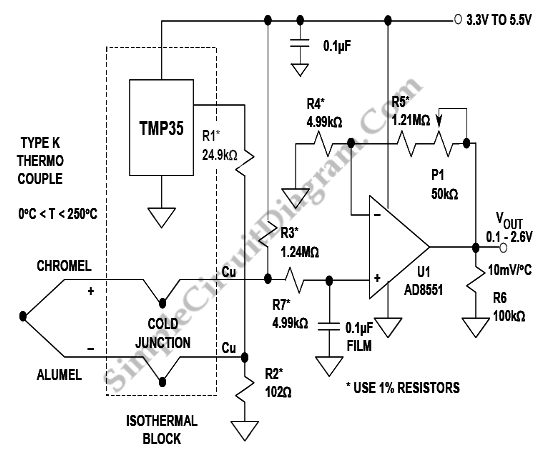Type K Thermocouple Amplifier And Cold Junction Compensator
The output conditions of a Type K thermocouple, while providing cold-junction compensation, operating over temperatures between 0’C and 250’C is shown in circuit diagram below.

This circuit has been designed to produce a basic output voltage transfer characteristic of 10mV/’C and operates from single +3.3V to +5.5V supplies with the AD8551. A Type K thermocouple exhibits a Seebeck coefficient of approximately 40uV/’C. To introduce an opposing cold-junction temperature coefficient of -40uV/’C, at cold junction, the TMP35 voltage output sensor with temperature coefficient of 10mV/’C is used with divider R1 and R2. This prevents the isothermal, cold-junction connection between the thermocouple’s wire and the circuit’s printed circuit board traces from introducing an error in the measured temperature. For temperature range 20’C to 50’C, this compensation works extremely well. The thermocouple produces an output voltage change of 10mV over a 250’C measurement temperature range. The required gain is 250 since the circuit’s required full-scale output voltage change is 2.5V. Choosing R4 equal to 4.99Kohm sets R5 1.24Mohm. A 50Kohm potentiometer is used with R5 for fine trim of the full-scale output voltage with fixed 1% value for R5 of 1.21Mohm. The U1 amplifier should be a low drift, very high gain type. We can use a chopper-stabilized AD8551 or an OP777 precision bipolar op amp for U1. [Source: Analog Devices]